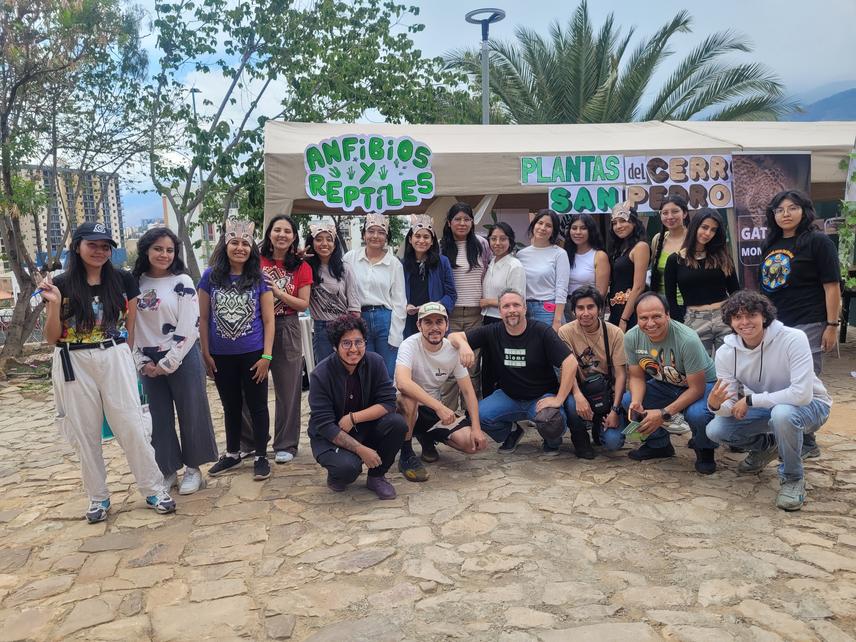Yara Alexandra Cerruto Caparicon
Cerro San Pedro is a patch of natural habitat threatened by unregulated urban sprawl, pollution, soil erosion and the proliferation of exotic species. Despite this anthropogenic pressure, the area still shelters many wildlife species, including carnivores such as Geoffroy's cat (Leopardus geoffroyi), the Culpeo fox (Lycalopex culpaeus), the lesser grison (Galictis cuja), and the Molina’s hog-nosed skunk (Conepatus chinga).

Team members participating in a Cerro San Pedro wildlife fair. © Micaela Mendieta.
We started a conservation project aimed at producing much-needed information on the carnivore community of Cerro San Pedro while creating awareness on the threats to the conservation of this almost completely isolated natural area. We will focus on understanding the ecology, habitat use, activity patterns and diet of the carnivores. We are implementing the use of camera traps, diet analysis from faecal samples, and small mammal live trapping. In addition, we will work on environmental education and community participation activities, to create awareness on the ecological and recreational value of carnivores and thus promote the coexistence with local people.
Our project will provide sound evidence allowing us the design and implementation of conservation strategies to mitigate current threats and preserve this ecosystem as a key refuge for an isolated population of carnivores in the central valley of Cochabamba.
Header image: Cerro San Pedro and the extensive city in the background. © Yara Cerruto.